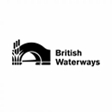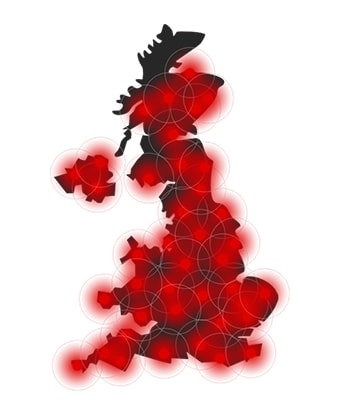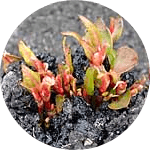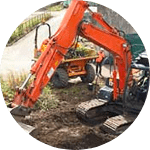Aquatic Weed Removal & Control

The overview
What’s the problem?
- Legal implications
- Chokes water courses
- Lack of oxygen / loss of fish life
- Almost impossible to eradicate once established
- No natural predators
- Flood risks
- Rapidity of growth and spread
What are the legal implications? *England
- The Revision of the Wildlife and Countryside Act includes amendments and additions of various aquatic species
- Possible power of restoration forcing those that cause the problem to pay for getting rid of it
In Detail
Exotic aquatic plant species are often sold in local nurseries, pet centres and aquariums, and purchased by the general public for use in their own gardens and ponds. Whilst the majority of these plants are not a problem, some species have escaped and become pests in the wider environment.
Once in the wild, these aquatic invasive plants cause major problems in our rivers, lakes and ponds. With no natural enemies, they grow rapidly, blocking out sunlight and shading the river bed, out-competing and taking over from our native plant species and killing life on the waterways.
How has this happened?
- Sold in nurseries
- Purchased by the general public for ponds
- Accidentally released
Plants can be transported to a new location by:
- Boats, anglers, walkers;
- Birds, wildlife;
- Water and flooding.
Who we help
We have a long track record of managing some of the most complex sites in the country and have worked with the Environment Agency on several large flood alleviation projects, as well as providing advice to the majority of house builders and developers in the UK.
Click here to view who we help







Australian Swamp Stonecrop (Crassula helmsii)
Introduction
Australian Swamp Stonecrop (Crassula helmsii, also known as New Zealand Pigmy Weed) was first introduced to Britain in 1911 from Tasmania. It is sold as an oxygenating plant for ponds and has now been found at over 1,500 wild sites in Britain. Crassula can inhabit any static or slow flowing freshwater habitat up to 3m in depth, regardless of the water chemistry. Growth is rapid and continues throughout the year, absorbing nearly all available nutrients and out-competing native plants.
Identification
There are a number of forms of Crassula, the predominant type being dictated by the prevailing conditions. The terrestrial type has creeping stems with aerial succulent leaves. The aquatic type has two forms; an emergent form found in water less than 0.6m in depth and a submerged form. Small white flowers are produced from June to September.
Legislation
Australian Swamp Stonecrop is covered by the Wildlife and Countryside Act and the Environment Agency has issued guidelines for its control.
Control Methods
Applications of Glyphosate to emergent stands from March to October can achieve effective control. Regular treatment is required with at least two applications each year. Dredging, to remove the plant from open water, can be effective but care must be taken to ensure that no plant material is transported elsewhere.
Creeping Water Primrose – (Ludwigia peploides)
Identification
Creeping Water Primrose has bright yellow flowers in July to August consisting of 5 petals. Its leaves are arranged alternately on stem, round or long and slender in shape – up to 9cm long attached to fleshy, smooth or hairy stems. It reproduces primarily via plant fragmentation and also seed.
Legislation
Creeping Water Promrose is covered by the Wildlife and Countryside Act and the Environment Agency has issued guidelines for its control.
History
It is native to South America but was introduced to Europe as a ornamental and water garden plant.
Problems
Covers the water surface interfering with both the ecology and amenity uses of the water body.
Geographic Spread
Limited sites in the south and a single occurrence in the North West – It has been eradicated from some of these already.
Control Methods
Dredging works well on small infestations.
Fairy Fern – (Azolla Filiculoides)
Identification
Fairy Fern has branched stem with attached leaves divided into two lobes; the upper lobes floating on the water surface, c.1-1.5mm across, overlapping and concealing the stem; the lower, submerged lobes larger but not overlapping so that the stem is visible; bright green with a noticeable fine red border around each leaf. Individual roots originate from the lower surface of the stem at the junctions with the side branches. It often acquires a rusty red colouration in winter, or when stressed. It reproduces as the fronds grow and via spores.
History
Native to western North America but its introduction date to the UK is unknown although it is mentioned in literature in 1895.
Legislation
Fairy Fern is covered by the Wildlife and Countryside Act and the Environment Agency has issued guidelines for its control.
Problems
Covers the water surface interfering with both the ecology and amenity uses of the water body and impedes drainage.
Geographic Spread
Present records show that it is only located in Ireland.
Control Methods
- Dredging works on small infestations
- Chemical control with Glyphosate is the most effective
- Biological control: a weevil, Stenopelmus rufinasus, about 2mm long, with a yellow-striped back, is effective against Azolla in South Africa, and has been observed several times in the UK; grass carp feed on small infestations
Floating Pennywort – (Hydrocotyle Ranunculoides)
Identification
Floating Pennywort has small green/white flowers, pale reddish stems and circular, rounded edged green leaves. It can grow an impressive 20cm per day!
History
Native to North America and brought to Britain on 1980’s as tropical aquaria and garden ponds. It was first noted in the wild in Essex 1991.
Legislation
Floating Pennywort is covered by the Wildlife and Countryside Act and the Environment Agency has issued guidelines for its control.
Problems
Covers the water surface interfering with both the ecology and amenity uses of the water body and creates mats which can spread 15m from the bank per year.
Geographic Spread
Present records show it is located in London, Kent, Essex, isolated in North West and Cornwall.
Control Methods
- Cutting – prevents complete dominance
- Pulling/Dredging – works well on small infestations
- Major mechanical removal
- Glyphosate is the most effective treatment – however the plant doesn’t rot down very quickly
Parrot Feather (Myriophyllum Aquaticum)
Introduction
Parrot Feather (Myriophyllum Aaquaticum) gets its name from its feather-like leaves which are arranged around the stem in whorls of four to six. Parrot feather has both submersed and emergent leaves, with the submersed form being easily mistaken for Eurasian Watermifoil (Myriophyllum Spicatum), a close relative. The submersed leaves are 1.5 to 3.5 centimeters long and have 20 to 30 divisions per leaf. The emergent leaves are 2 to 5 centimeters long and have 6 to 18 divisions per leaf. The bright green emergent leaves are stiffer and a darker green than the submersed leaves. The emergent stems and leaves are the most distinctive trait of parrot feather, as they can grow up to a foot above the water surface and look almost like small fir trees. Submersed leaves are limp and often appear to be decaying but the stems are very robust. Adventitious roots form at the nodes. When attached to a bank, parrot feather stems can extend out several yards over the water surface. Flowers are inconspicuous and are borne in the axils of the emergent leaves. The white flowers are approximately 1/16 inch long.
Because of its attractiveness and ease of cultivation, parrot feather has been introduced worldwide for use in indoor and outdoor aquaria. It is also a popular aquatic garden plant. However, it has escaped cultivation and spread via plant fragments and intentional plantings. While parrot feather may provide cover for some aquatic organisms, it can seriously change the physical and chemical characteristics of lakes and streams. Infestations can alter aquatic ecosystems by shading out the algae in the water column that serve as the basis of the aquatic food web.
Habitat
Parrot feather is found in freshwater lakes, ponds, streams, and canals and appears to be adapted to high nutrient environments. It tends to colonise slowly moving or still water rather than in areas with higher flow rates. While it grows best when rooted in shallow water, it has been known to occur as a floating plant in the deep water of nutrient-enriched lakes. The emergent stems can survive on wet banks of rivers and lake shores, so it is well adapted to moderate water level fluctuations.
Growth
This rhizomenous perennial exhibits an annual pattern of growth. In the spring, shoots begin to grow rapidly from overwintering rhizomes as water temperatures increase. Rhizomes function as a support structure for adventitious roots and provide buoyancy for emergent growth during the summer. Emergent stems and leaves extend from a few inches to over one foot above the waters surface. Underwater leaves tend to senesce as the season advances. Plants usually flower in the spring but some plants may also flower in the fall. The inconspicuous flowers form where the emergent leaves attach to the stem. In fall parrot feather typically dies back to the rhizomes. In some areas, parrot feather may maintain considerable winter biomass. Because parrot feather lacks tubers, turions, and winter buds, rhizomes serve all those functions. Parrot feather does not store phosphorus or carbon in its rhizomes and this characteristic may explain the failure of parrot feather to invade areas with severe winters.
Control Methods
- Mechanical – Mechanical control is effective for removing large infestations of this plant in areas where access is available for weed cutting buckets or boats. Care should be taken to restrict the downstream movement of stem fragments which will result from cutting operations as regrowth is rapid from this type of propagule. The stems of this species are especially brittle and fragmentation occurs readily when the plant is cut. Chemical control of remaining plants should be undertaken.
- Chemical – The plant is controlled by applications of Dichlobenil in April. It is also controlled by herbicides containing 2,4-D amine as the active ingredient in early April. It is also controlled by applications of Glyphosate late in the season, and also to some extent by applications from April onwards. Chemical control will lead to a short-term eradication of this species, as recolonisation from original sources will often occur. It is important to establish where the infestation has come from and take action to eliminate the source of material.
- Biological – Grass carp will not eat this species unless they are at least 2 years of age and then only reluctantly as long as no other preferred species are present.
- Environmental – This species is not tolerant of fast flow and does not appear to grow in rivers or fast flowing streams. Increasing flow by narrowing slow-flowing channels may be a way of controlling the growth of this species. This effect is achieved when the plant itself grows in slow flowing systems and may result in self-limitation in this type of channel. Most emergent species are controlled by increasing shade. This can be achieved by planting trees along the south side of water bodies or by placing a floating opaque material over the water surface in early spring. Shade needs to be maintained for at least twelve months to give good control. Because of the association with eutrophic waters a reduction in the nutrient loading to the water may help reduce the competitive ability of this species and lead to a re-establishment of the native species. This can be achieved by buffer strips if non-point nutrient sources can be identified and by a reduction in phosphate loading from other point sources such as sewage works and farm effluents.
If you have concerns over Aquatics on your land, if you are unsure of your legal responsibilities, or, if you would like a quotation for control, please contact one of our specialist surveyors. Treatment costs start at £380.00 +VAT.

Where we have worked
We operate nationwide with a Rapid Response Team on standby 7 days a week, to deal with the most urgent client enquiries.
We’re a dedicated team of professionals who share a great deal of experience. We invest heavily in the continual training of all our employees, ensuring you always have a highly qualified team working on your project with the latest industry accreditations.
Our process

1. Identify
Our first step is to identify if you have an invasive plant. For a quick ID, you can send us some photos. Alternatively, we can carry out a full site survey to confirm the extent of the infestation.

2. Solution
We will provide a range of treatment options individually tailored depending on your site requirements.

3. Quote
A detailed breakdown of costs for each phase of treatment will be provided, including on-going monitoring programmes with insurance backed guarantees.

4. Removal
Our experienced and professional in-house teams will carry out the treatment to the highest of standards to achieve full eradication. All works are carried out in accordance with the INNSA Code of Practice.

5. Treatment
A range of treatment solutions are available, from in-situ herbicide application to excavation and removal or burial. All carried out in-house by our experienced team.

